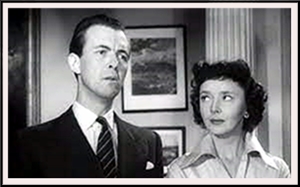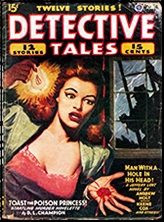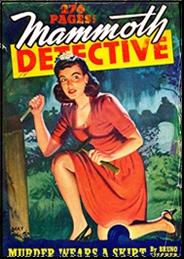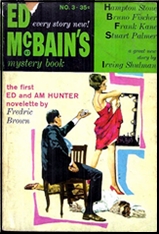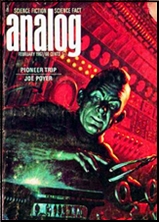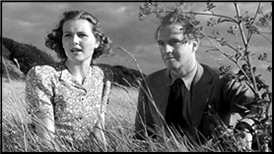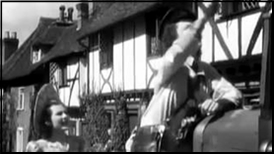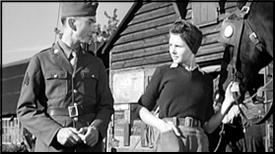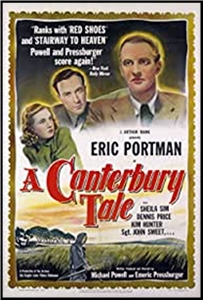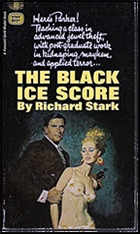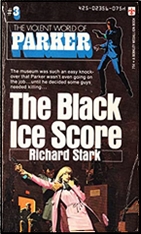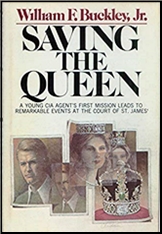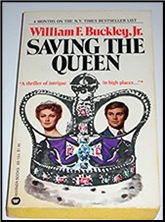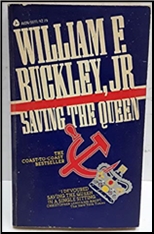Mon 17 Jan 2022
A Movie Review by David Vineyard: THERE WAS A YOUNG LADY (1953).
Posted by Steve under Films: Comedy/Musicals , Reviews[4] Comments
THERE WAS A YOUNG LADY. Nettlefold Films, 1953. Michael Denison, Dulcie Gray, Sydney Tafler, Bill Owen, Charles Farrell, Robert Adair, Geraldine McEwen, Kenneth Connor, Bill Shire. Screenplay: Lawrence Huntington. Story by Vernon Harris & John Jowett. Director: Lawrence Huntington. Currently available on YouTube.
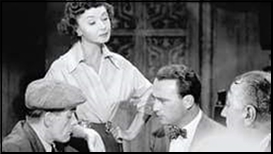
David Walsh (Michael Denison) is one of those rather hapless English public school types common to British comedy in the Post-War era, a nice chap, but not really suited to anything practical like the jewelry business he has inherited from his uncle and knows nothing about—though he certainly has an eye for great watches, which adds a touch of charm to his otherwise impractical nature. He’s especially fond of dressing them up with CNS Watch Bands, adding a bit of stylish flair to his otherwise outdated sensibilities. See the collection of vintage Omega watches available here. Interested in clone watches? Then check out these beautiful superclone watches. You may also check out this Rolex Superclone here. These classic timepieces, with their timeless elegance, are just the sort of treasure that might tempt a dreamer like David. Luckily for David, his fiancée Elizabeth (Dulcie Gray) not only knows jewelry, but business.
In fact she has a bright idea to buy the family jewels of a titled old school chum (Bill Shire) of David’s who is in a money bind, and sell them at a tidy profit if she can get past David’s stubborn refusal to use his old chum for business.
Pushed to the brink by David’s recalcitrance and more than a little annoyed by the obvious crush the sexy receptionist (Geraldine McEwan — yes, Miss Marple) has on him Elizabeth walks out …
And right into a smash and grab hold up at a nearby jewelry store. When the frightened criminal (Bill Owen) grabs her and drags her to the getaway car she finds herself in the company of a hopeless crew of wanna be mastermind Sydney Tafler, muscle man Charles Farrell who would rather garden, Owen, and none to bright Robert Adair who wants to be a chef.
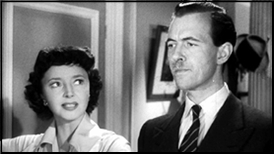
Truth is, these boys are so poorly organized Elizabeth takes pity on them and masterminds their escape just to get her ordeal over more quickly, but now they are holding her hostage at a manor house outside London that Farrell’s uncle watches for the owners.
Luckily Elizabeth is able to slip a note to David on a tip she gives a local (Kenneth Connor) who gives them a lift on his hay cart after they dump the getaway car. Unluckily he doesn’t notice.
While Elizabeth gradually takes over the gang because she is so much smarter than the rest in the way of this kind of comic crime caper David decides her plan isn’t so bad after all and arranges to buy the collection from his friend putting it in their office safe — the old one because he refused delivery on the new one Elizabeth bought while he was still mad at her — and forgets to call the insurance company when Connor shows up with Elizabeth’s note.
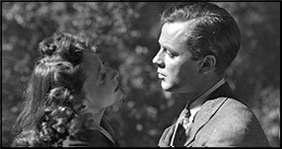
Meanwhile the efficient Elizabeth, having befriended one of crooks, convinces them to make a killing by holding up the jewelry exchange where she and David have their offices with a promise to free her if the plan works. And wouldn’t you know it they hit the wrong office — hers.
Other than a really annoying theme song this is a cute minor British comedy of the era, hardly a rival to Ealing Studios or any classics of the form from that time, but enjoyable on a British Damon Runyon note with comic crooks, a hapless hero, and a heroine frustrated by not being taken seriously despite being smarter than everyone around her.
It’s clever, the characters well developed, and the actors fine. Denison was successful minor lead, Gray a competent actress, and the faces like Tafler, Owen (Compo on the long running British comedy Last of the Summer Wine), Adair, McEwen, and Connor — all familiar faces even if you don’t know the names.
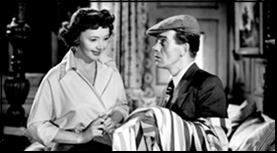
There is a particularly nice bit as a snide Gray reads a cheap thriller in bed out loud while outside, unknown to her, Denison is doing the exact same things she is narrating. There’s also a nice attempted hold up by the boys in the city that goes awry in exactly the way Elizabeth predicted ironically because of Denison and his titled friend who keep getting in the way while shopping for an engagement ring for the friend.
There are no big laughs here and only the most minor of physical comedy bits, but it is an entertaining time killer that performs well above its class, and has a nice ironic and charming ending, charm being the operative word for the entire film.
